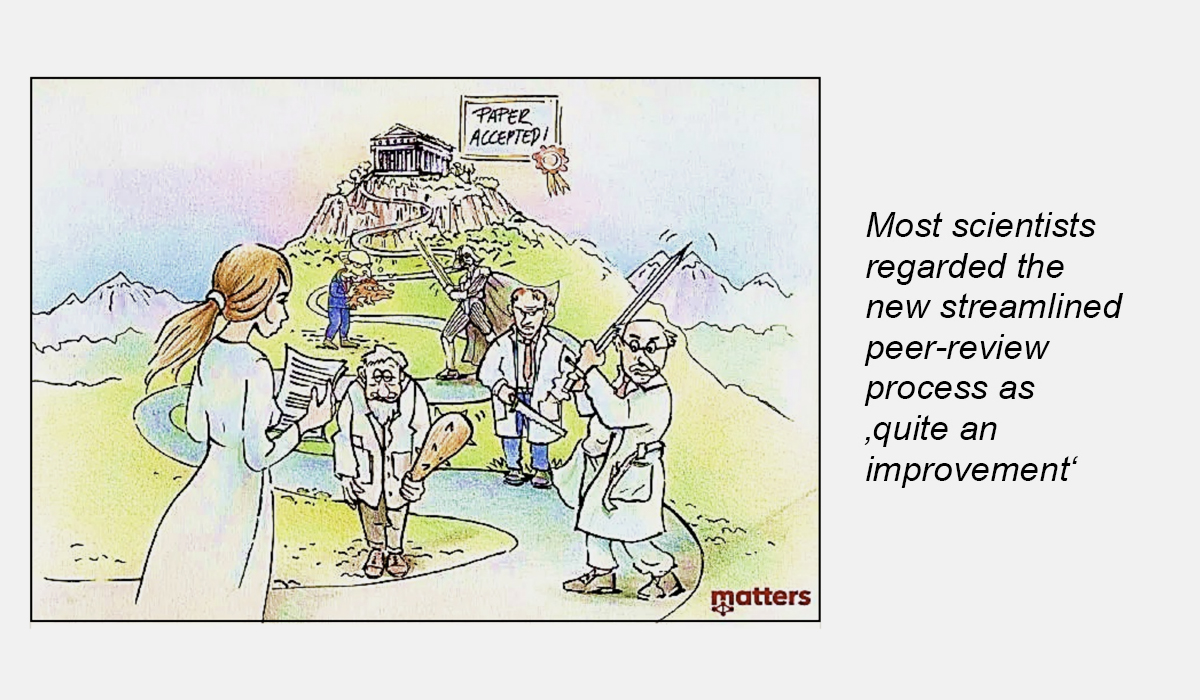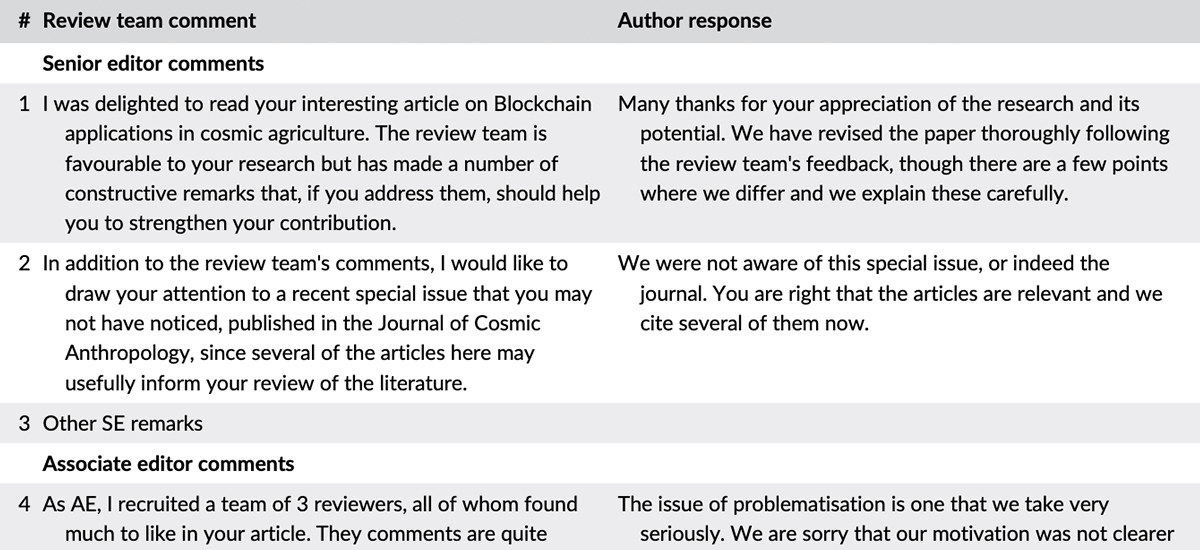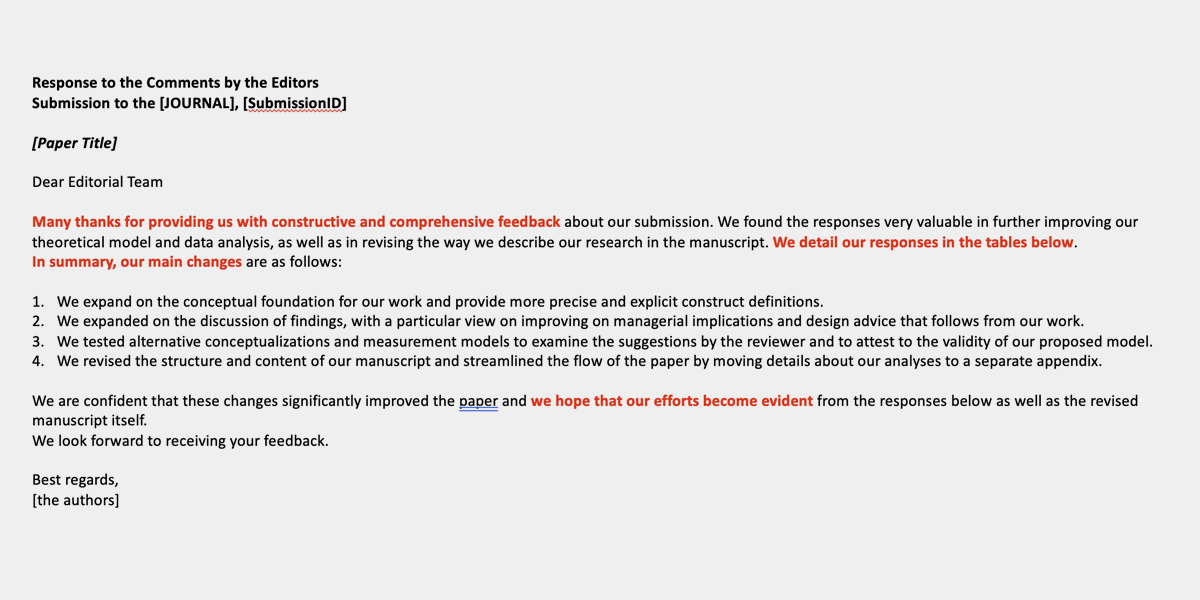Review & revision
How to write and deal with reviews?
Neu-Ulm University of Applied Sciences
January 1, 2022
Prologue
Many years ago when I was bemoaning my first manuscript rejection (of many), I complained to a colleague that the reviewers had gotten it all wrong. My colleague kindly told me that it was my fault. It was my job to write clearly enough so that the reviewers could easily understand what I was trying to say. I realize now how right he was. Saunders (2005)
Introduction
Search for diamonds
Editors and reviewers task is to search for the gem in the paper and to cut this diamond.
What makes up a rough diamond?
Recap
I believe that it is the unbeatable combination of a reasonably well applied theory answering interesting, novel questions in a well known thematic stream of work that leads to blue oceans. Straub (2009)
Move into intellectual territory that is unexploited and pose fascinating research questions.
What is new here? Where is the ‘hook’?
Link your topic to popular themes—join a major conversation
Theory is king—it is in the evaluation of the theoretical contribution that most reviewers become convinced, or not.
Good manuscripts
Pay attention to the following criteria (Zmud 1998; Saunders 2005).
Strong motivation: Infect the mind of your reader with one clear, sharp idea and be explicit about it, its significance and novelty.
Significant contribution: Work out your findings clearly and place them well in the context of ongoing research.
Appropriate research design: Ensure a convincing logic to your theoretical or analytical argument and the appropriateness of data collection and analysis.
Good presentation: Write in such a way that the reviewers can easily understand what you are trying to say.
Exercise
Reflect your read of hypothetical AoM micro submission “Responses to Transformational Leadership: Are Some Followers Immune?”.
Form small groups and judge it on the criteria outlined above.
My thesis criteria
Motivation, theory, method, results, contribution, and writing
Peer-reviews
Basics
Scientific publications are peer-reviewed.
- Before a paper is published, it is reviewed by experts in the field
- Most often double-blind process: authors and reviewers do not know each others’ identity
- The review process is managed by an editor, which typically is a successful senior scholar
- The editor adequate reviewers and makes decisions about the publication of the manuscript (incl. desk-rejects)
Process

Outcomes
Submitting a paper for review leads to one of three outcomes:
Rejection, revision (major or minor), or (conditional) accept.
Sarcasm with a touch of reality

Review
What a review is
- “Something that will ruin your day.” Even if it is good.
- The stamp of scientific quality.
- Feedback from your peers—future directions?
What a review is not
- An acceptance/rejection decision (only editors or program committees accept or reject, reviewers recommend)
- A place for bias, prejudice, personal animosity (though it often appears to be so)
Reasons
There are several key reasons why you should review other manuscripts:
- Serve your duty as someone who submits manuscripts to peer-reviewed outlets (2-3 reviews written per paper written)
- Grow your own research and writing skills (“good reviewers write good papers”)
- Build the discipline, move forward science
- Expand your network (the editors know you and will yeek you out as experts in the future)
Reviewing
Process
My suggestions for doing a review:
- Read the paper
- Read the review form (dimensions to look at)
- Read the paper
- Review/research literature
- Note areas for enhancement
- Wait a few days
- Read paper
- Write review
Put yourself in the author’s shoes and offer constructive criticism.
Additional advices
Be polite and conversational,
identify some strengths,
search for the gem (the ideas),
be concise, be consistent, and be on time.
Exercise
Read one of the reviews on the Hypothetical AoM micro submission “Responses to Transformational Leadership: Are Some Followers Immune?” and outline whether it conforms to the points outlined hitherto.
Revising
Basics
Do not to let pride or arrogance get in your way Recker (2021)
- If the paper is rejected: determine why and fix legitimate flaws
- If you are asked to revise and resubmit, do it
Take all editorial and reviewer comments seriously
See them as a chance to improve
Process
Recker (2021) recommends to manage revisions as follows:
- Put the reviews aside for a while
- Read and understand the reviews
- Tabulate reviews
- Revise the paper
- Write a response letter
Response table
Many outlets recommend to format responses in a table (e.g., Techatassanasoontorn and Davison 2022)

Additional comments
Develop a revision strategy document, engage in an intellectual conversation, and produce concise responses.
Cover letter
Example revision cover letter:

Exercise
Image you would be the author of the hypothetical AoM micro submission “Responses to Transformational Leadership: Are Some Followers Immune?”.
Pick one point of one of the reviews and write a short, hypothetical response to the critique.